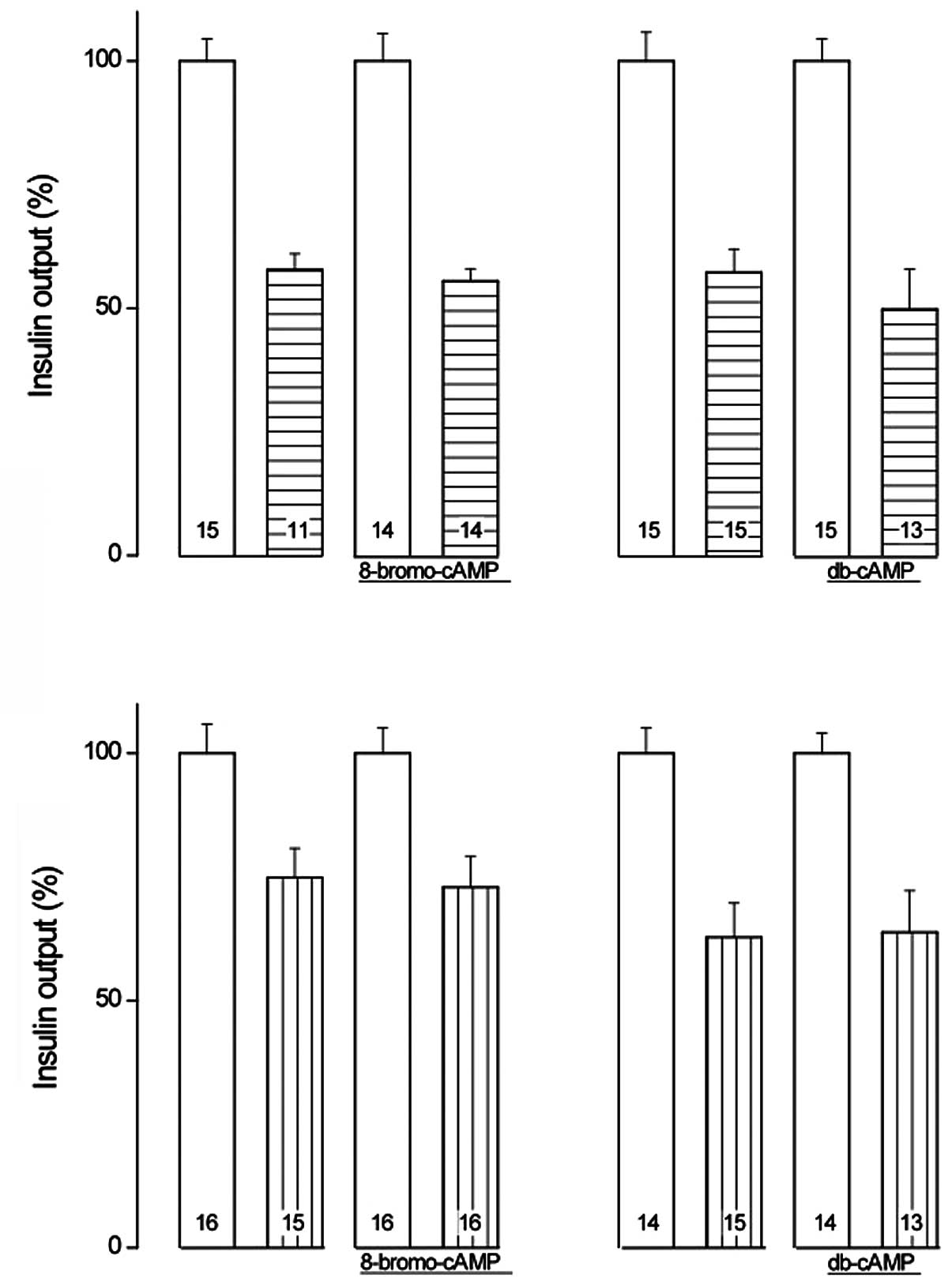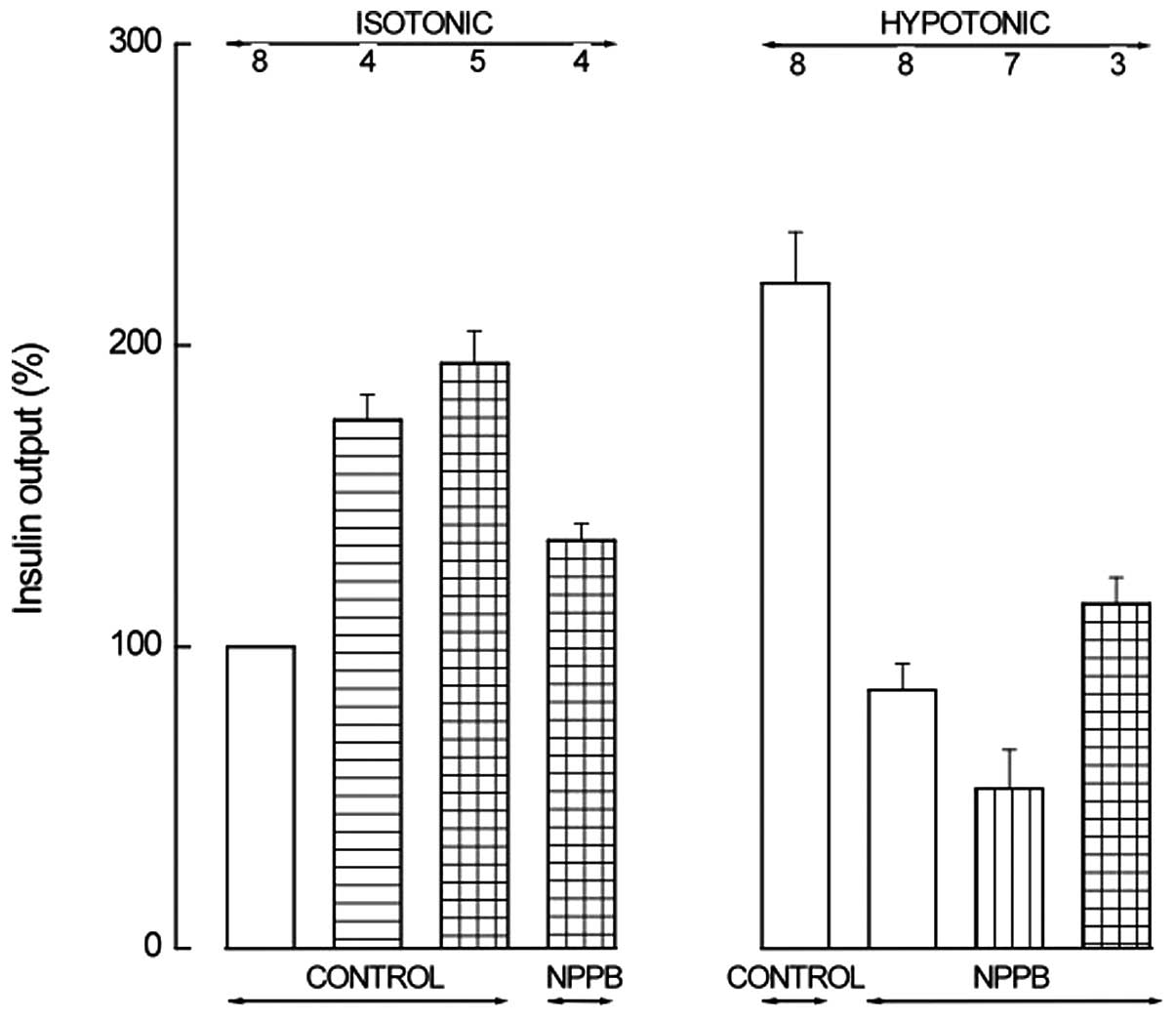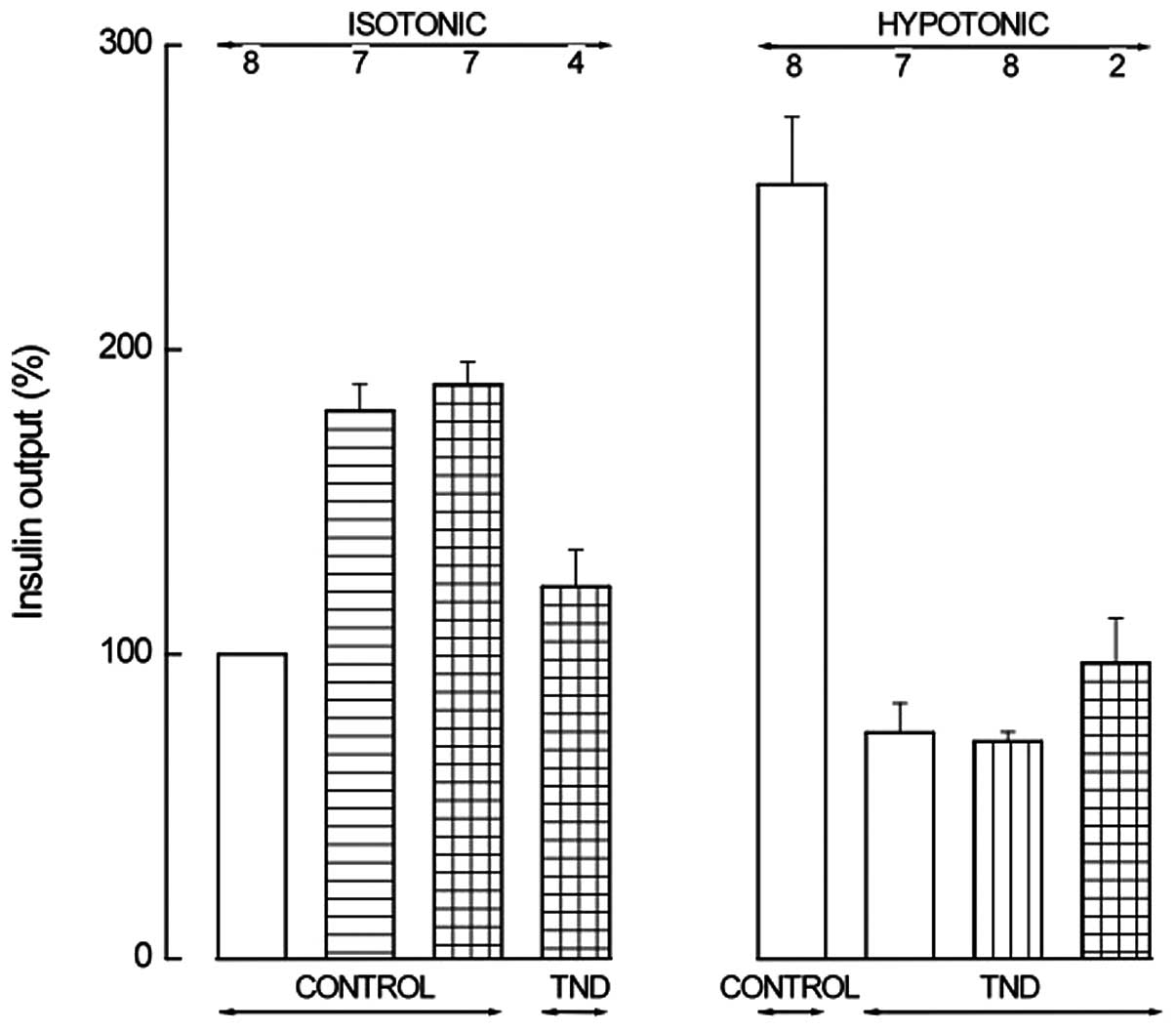Interaction between cAMP, volume‑regulated anion channels and the Na+‑HCO3‑‑cotransporter, NBCe1, in the regulation of nutrient‑ and hypotonicity‑induced insulin release from isolated rat pancreatic islets and tumoral insulin‑producing BRIN‑BD11 cells
- Authors:
- Published online on: February 28, 2013 https://doi.org/10.3892/mmr.2013.1346
- Pages: 1666-1672
Metrics: Total
Views: 0 (Spandidos Publications: | PMC Statistics: )
Total PDF Downloads: 0 (Spandidos Publications: | PMC Statistics: )
Abstract
Soluble adenylyl cyclase (sAC) has been hypothesized to play a role in insulin secretion. The present study aimed to investigate the interaction between adenosine 3',5'‑cyclic monophosphate (cAMP), volume‑regulated anion channels (VRACs) and the electrogenic sodium bicarbonate (Na+‑HCO3‑) cotransporter, NBCe1, in the regulation of nutrient‑ and hypotonicity‑induced insulin release from rat pancreatic islets and tumoral insulin‑producing BRIN‑BD11 cells. In the islets, 5‑nitro‑2‑(3‑phenylpropylamino)benzoic acid (NPPB) and 5‑chloro‑2‑hydroxy‑3‑(thiophene‑2‑carbonyl)indole‑1‑carboxamide (tenidap) reduced glucose‑stimulated insulin release, however, only NPPB suppressed the enhancing action of cAMP analogs upon such a release. Insulin output from the BRIN‑BD11 cells was stimulated by 2‑ketoisocaproate (KIC) or extracellular hypoosmolarity. cAMP analogs and 3‑isobutyl‑1‑methylxanthine increased the insulin output recorded in the isotonic medium to a greater relative extent than that in the hypotonic medium. The secretory response to KIC or hypotonicity was inhibited by NPPB or tenidap, which both also opposed the enhancing action of cAMP analogs. Inhibitors of mitogen‑activated protein (MAP) kinase decreased insulin output in isotonic and hypotonic media. The inhibitor of sAC, 2‑hydroxyestriol, caused only a modest inhibition of insulin release, whether in the isotonic or hypotonic medium, even when tested at a concentration of 100 µM. The omission of NaHCO3 markedly decreased the secretory response to KIC or extracellular hypotonicity. The omission of Na+ suppressed the secretory response to extracellular hypotonicity. The observations of the present study do not support the hypothesis of a major role for sAC in the regulation of insulin release.













